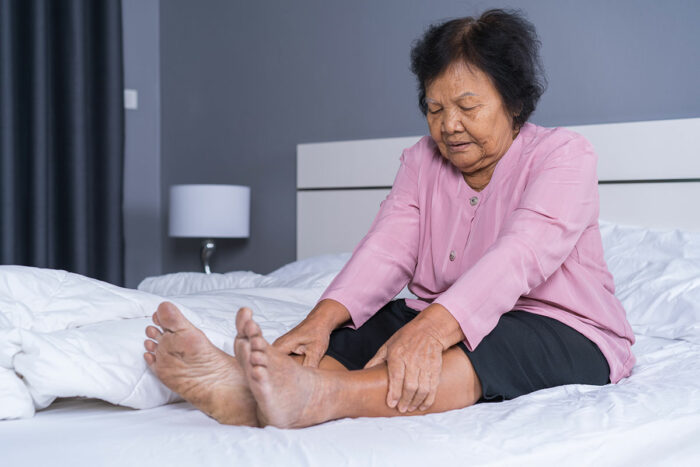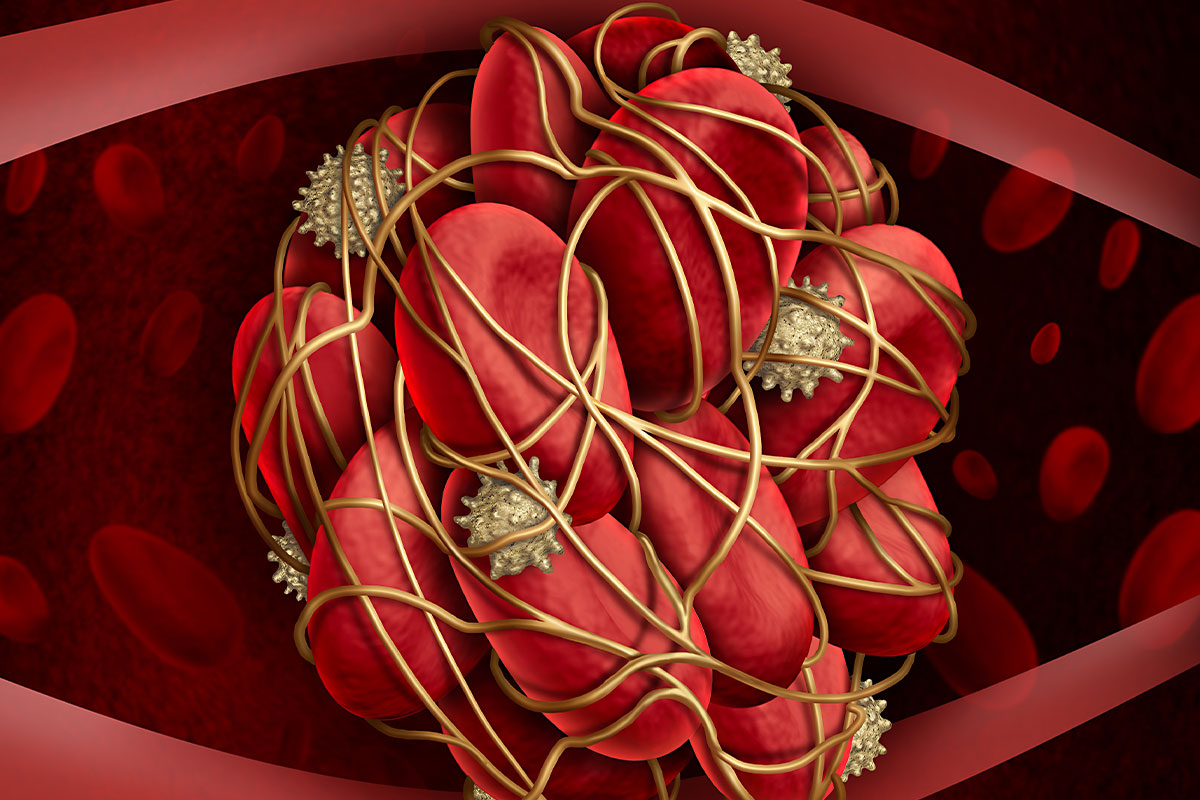People with persistent leg pain after blood clot needed for study
Trial evaluates whether improving blood flow in legs reduces disability
 Getty Images
Getty ImagesPeople with chronic pain after a blood clot in the leg are needed for a clinical trial led by Washington University School of Medicine in St. Louis. The study aims to determine whether a minimally invasive procedure can reduce pain and improve mobility.
Blood clots in the legs can be life-threatening. But even after the clots resolve with treatment, some people are left with long-lasting pain, swelling and heaviness in their legs that makes it difficult to walk.
Primary physicians often have little to offer such patients beyond compression stockings, but a multicenter clinical trial led by Washington University School of Medicine in St. Louis aims to determine whether a surgical procedure to improve circulation in the legs can alleviate symptoms and restore mobility. The trial is supported by $12 million in grants from the National Heart, Lung, and Blood Institute of the National Institutes of Health (NIH).
“Right now, unfortunately, when people have long-term pain after a blood clot, doctors have limited options,” said principal investigator Suresh Vedantham, MD, an interventional radiologist and professor of radiology at the university’s Mallinckrodt Institute of Radiology. “People come into our clinic after dealing with this for years and it has compromised the quality of their lives.”
From 300,000 to 600,000 people a year in the United States are diagnosed with blood clots in the leg, also known as a deep vein thromboses (DVT). Blood thinners can help clear the clots, but sometimes not before the clots irreversibly injure the veins. Some veins become too narrow for blood to flow freely. In others, one-way valves that help move blood upward from the feet to the heart are damaged and fail to shut properly, allowing fluid to pool in the legs. Blocked veins and leaky valves cause pain, swelling, heaviness, fatigue and, in severe cases, open sores on the legs.
“Small studies have suggested that opening up blocked veins and closing off backward-flowing veins can help patients, but this is the first large-scale trial to rigorously test this intervention,” said Vedantham, who is also a professor of surgery.
The Chronic Venous Thrombosis: Relief with Adjunctive Catheter-Based Therapy (C-TRACT) Trial has broad participation from experts across medical specialties that encounter patients with this condition. The trial is endorsed by national professional organizations and patient advocacy groups.
All participants in the study will receive the standard of care, which will commonly include: compression stockings and devices to improve circulation; supervised exercise programs; and/or appropriate use of medications to prevent repeat clotting and assist with ulcer healing. In addition, half of the participants will be randomly chosen to undergo minimally invasive procedures to place tiny stents inside narrowed veins and, if needed, to seal off veins with damaged valves so that blood can no longer flow backward down them.
The researchers will monitor the participants’ symptoms and mobility at six follow-up visits over two years.
“If these procedures work, it would be pretty dramatic for people living with this disability,” Vedantham said. “Many of our patients are unable to work. Some can’t even do normal household daily activities. We’re trying to restore their ability to function normally in life.”
Participants must be at least 18 years old, have been diagnosed with a blood clot in the leg more than three months ago, and be experiencing leg pain, severe swelling or other symptoms. There are 22 sites nationwide participating in C-TRACT. For more information, visit bloodclotstudy.wustl.edu/c-tract, email CTRACT@wustl.edu or call 1-866-974-CLOT (2568).
 Related: Clot-busting drugs not recommended for most patients with blood clots
Related: Clot-busting drugs not recommended for most patients with blood clots
Large clinical trial concludes such treatment does not prevent long-term complications






